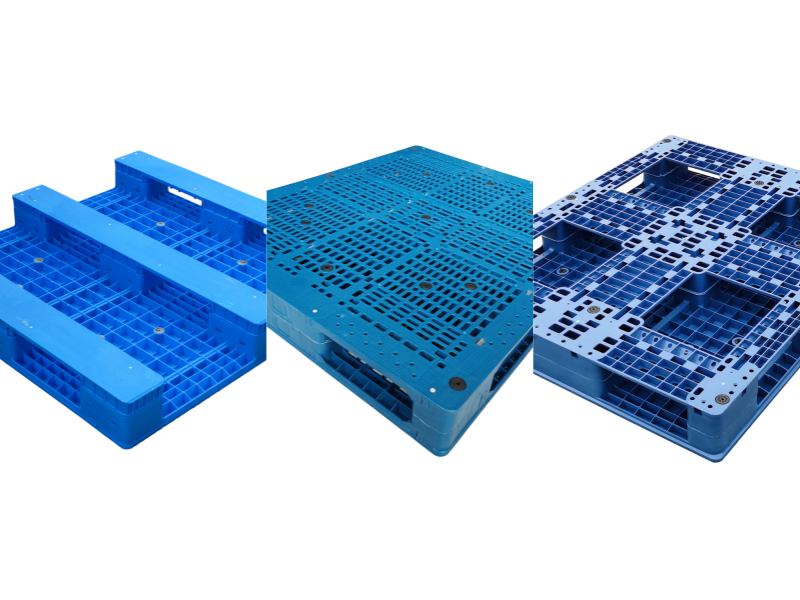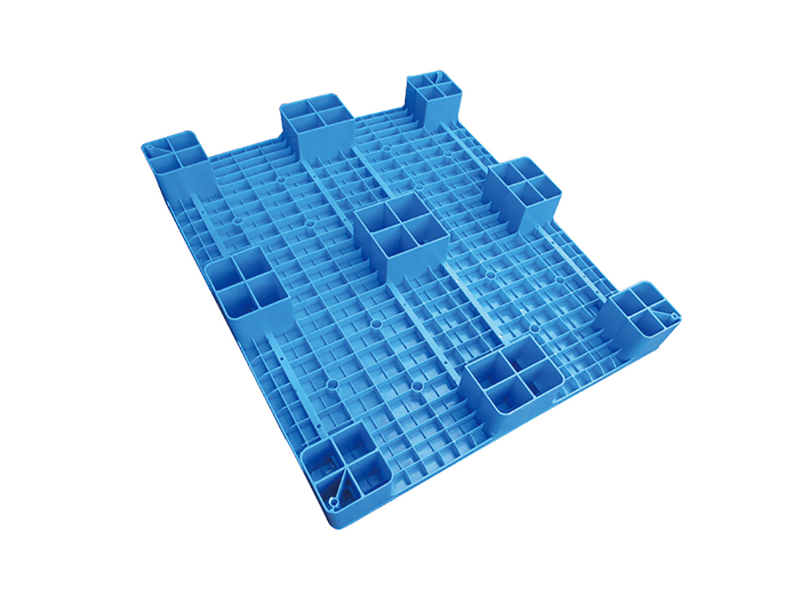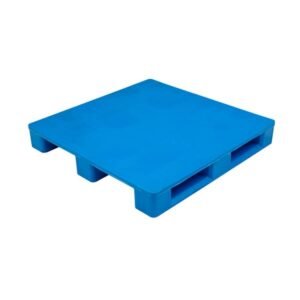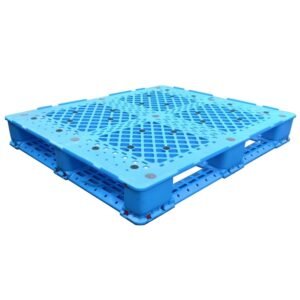What Are Rackable Pallets?
Rackable pallets are used on beam racks, drive-in racks, shuttle systems, open span racking system, or any racking types that support the pallet only at its edges. It is usually made of plastic or metal, with a reinforced bottom such as 3 runners, a solid deck, or 6 runners. These continuous base structures distribute the load across the rack beams, reducing deflection and preventing the pallet from slipping. However, even rackable pallets cannot fully avoid deformation under very high loads.

By contrast, pallets with 9 legs have only point contact and cannot stay stable on rack beams, making them unsafe for racking use.

What is Racking Load Capacity?
Racking load capacity is the maximum safe weight a pallet can carry when placed on rack beams, with the center of the pallet left unsupported. It’s important to note that this is different from static load on the floor or dynamic load during forklift handling. On the floor, the pallet is supported everywhere, but on racks, only the edges rest on beams, so the racking load is the key figure that decides whether goods stay stable or risk collapsing.
Racking load is not only about pallet design but also about workplace safety. Using pallets with continuous runners or perimeter frames helps reduce deflection and avoid accidents on racks. For more insights, including OSHA requirements, how to spot unsafe racking conditions, and tips on choosing pallets, see our article on Warehouse Racking Safety Guide.
How to Measure Racking Load Capacity?
Plastic Pallet manufacturers like us usually provide a racking load rating, and for rackable plastic pallets this is often between 0.5T and 1.5T. Although each pallet is tested before leaving the factory, it is still important to confirm performance in your own warehouse setup, because rack spacing and beam design can change the result.
We recommend measuring racking load capacity starts with seeing the pallet and the rack as one system. A pallet is never working alone—it relies on the beams that support it, and the space between those beams changes the way weight is carried.
In practice, a pallet is placed on two beams, supported only at the edges, with the center hanging free between the beams. Weight is then added gradually to find the safe point where the pallet remains stable without dangerous deflection.
It’s also important to remember that the figure is not fixed for all setups. A pallet tested at 1.2 tons on one rack may perform differently on another if the beams are longer, thinner, or spaced further apart. That’s why racking load capacity is always linked to rack design as well as pallet design.
For a deeper look at how rack dimensions influence load ratings, you can read our article on Pallet Racking Sizes Guide, which explains the common beam lengths and spacing standards that shape real warehouse performance.
FAQ About Rackable Pallets
Q1: Are rackable pallets made of wood?
Rackable pallets are mainly plastic or metal, since wood lacks the consistent strength needed when only pallet edges rest on beams.
Q2: Can rackable pallets be used on the floor?
Yes, rackable pallets can be used on the floor, but they perform best on racks—especially 3-runner base types. If your main need is floor storage, a 9-legs plastic pallet is usually the better choice.
Q3: Are rackable pallets also stackable?
Of course. Many rackable pallets are built for both uses, but double-sided rackable plastic pallets are the most suitable when stable stacking is the priority.
Q4: Do all rackable pallets need steel reinforcement?
Steel reinforcement is strongly advised, as it reduces deflection and improves rack safety, especially for heavy loads or wide spans.
Conclusión
In summary, Rackable pallets are not just stronger pallets—they are built to stay safe when only the edges rest on rack beams. That’s why understanding racking load capacity is so important: it tells you whether a pallet will hold steady or risk failing. And because no two warehouses have the same rack sizes or beam spans, the real performance always comes from matching pallet design with rack conditions. Once you keep these points in mind, choosing the right rackable pallet becomes simple, safe, and reliable for your operation.




